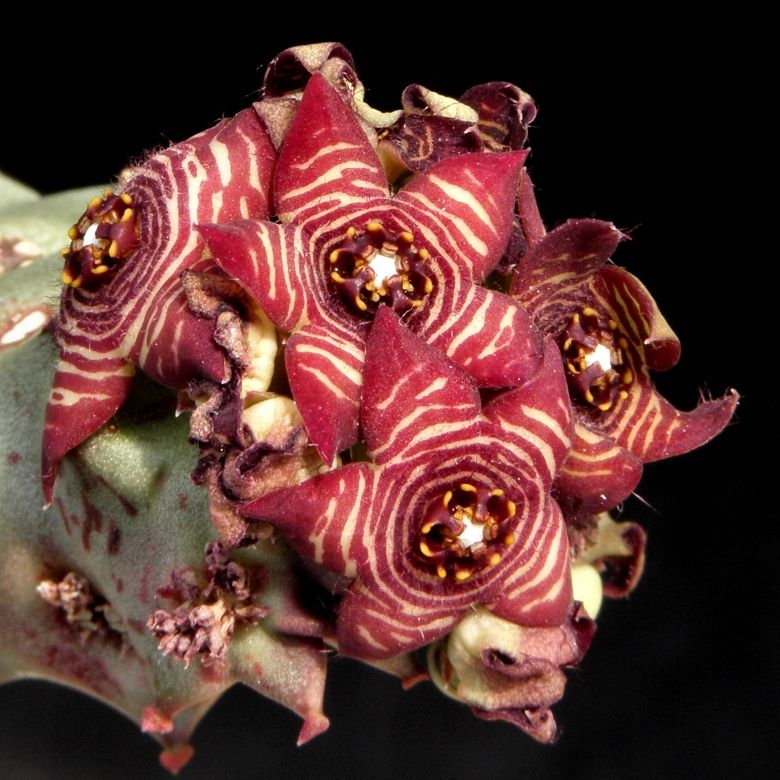
Caralluma europaea
Origin and Habitat: South-Eeastern Spain, southern Italy (Linosa, Lampedusa), Morocco, Tunisia, Libya, Egypt to Jordan.
Habitat: Dry, rocky places on limestone relief and sand dunes in coastal fronts as well as inland, and in Mediterranean islands dominated by different shrub communities. It grows almost always in half-shaded position under the protection bushes and small trees. Companion plant comprises such species as: Juniperus phoenicia, Chamaerops humilisSN|24321]]SN|24321]], Periploca angustifolia, Quercus coccifera, Pistacia lentiscus. In Morocco, it can be found in the same habitats as Caralluma burchardiiSN|30729]]SN|30729]] subsp. maura.
Synonyms:
See all synonyms of Caralluma europaea
Common Names include:
ENGLISH: Caralluma
ITALIAN (Italiano): Fior di Tigre
SPANISH (Español): Penquilla del campo, Penquilla, Espinal, Empeinadora, Chumberillo del lobo, Chumberillo de lobo, Chumberilla, Penquilla del monte
Description: Caralluma europaeaSN|1969]]SN|1969]] is a low perennial stem succulent forming mats by means of long stolons running underground, as the name suggests, it is a species of special interest, because it one of the two European species (the other being Caralluma munbyana).
The flowers are very variable throughout the vast distribution range, 6 to 25 cm in diameter, variably hairy and uniformly coloured to stripped. This floral polymorphism has led some authors to describe a lot of unnecessary varieties.
Stems: Aerial stems (5-)10-15(-20) cm long, ascending or sprawling, 1-2 cm across, green or purplish-brown, the 4 faces flat to concave, with acute to obtuse, toothed or lobed angles; teeth of leaf-scars less than 1 cm apart. Tubercles oblong-conical, slightly porrect.
Leaves: Sessile, orbicular, shortly acuminate.
Inflorescences: Clustered near stem-apex each with (2-)5-25(-40) pedicellate flowers.
Flowers: Yellow with purple bands. Pedicels (1-)2-4(-6) mm long 1,5 cm in diameter. Sepals 1,5-2,5 cm long, 1 cm wide. Corolla funnel-shaped, campanulate or flat (6-)13-17(-25) mm in diameter, 12-18 mm long, rotate, inside from dirty white or yellowish with reddish brown or purplish bands to entirely purplish. Corolla lobes broadly triangular to suborbicular, somewhat horizontally spreading or slightly recurred, shortly acuminate, more or less ciliate on margins, rarely hairy within. Hairs purple, about 1 mm long unbranded. Cilia dark purple, bifid, 1,2-2 mm long. Corona purple. Pollinia 0,4 mm long 0,4 mm broad and roundish. Translator wings 0,1 mm long.
Fruits: Follicles approx. 100 mm long 7 mm in diameter, slightly recurved.
Remarks: Plants from Linosa and Lampedusa (Italy) differ from those from Spain in their slightly smaller corolla and appendaged corona.
Chromosome number: Caralluma europaeaSN|1969]]SN|1969]] is diploid in Europe but hexaploid (66) in North Africa (var. maroccana)
Notes: Caralluma europaaea is a difficult complex of forms closely related to Caralluma joannisSN|18990]]SN|18990]].
Only two varieties are formally recognized: Cralluma europaea var. europaea and Caralluma europaea var. judaica
Bibliography: Major references and further lectures
1) Focke Albers, Ulrich Meve “Illustrated Handbook of Succulent Plants: Asclepiadaceae", Volume 5 Springer, 2002
2) Francisco García Novo, Robert M. M. Crawford, Mari Cruz Díaz Barradas “The Ecology and Conservation of European Dunes” Universidad de Sevilla, 01/Jan/1997
3) Werner Rauh “The Wonderful World of Succulents: Cultivation and Description of Selected Succulent Plants Other Than Cacti” Smithsonian Institution Press, 1984
4) Alain Campbell White, Boyd L. Sloane “The Stapelieae” Volume 1 Typography and Printing by S. E. Haselton at Abbey San Encino Press, 1937
5) Vera Higgins “Succulent Plants Illustrated” Blandford Press, 1949
6) T. G. Tutin, V. H. Heywood, N. A. Burges, D. H. Valentine, S. M. Walters, D. A. Webb "Flora Europaea", Volume 3 Cambridge University Press, 1972
7) James Cullen "The European garden flora: a manual for the identification of plants cultivated in Europe, both out-of-doors and under glass. Dicotyledons (part IV) : [Loganiaceae to Compositae]" Cambridge University Press, 2000
8) Berthet P. "A la découverte des Caralluma d’Espagne" in Succulentes 2: 3-5 1987
9) Albers F. & Meve U. "Asclepiadaceae. Illustrated Handbook of Succulent Plants" 46-63, 191 2002
10)Jonkers B. & Walker C.C. “The Asclepiads in Morocco. A short commentary.” Asklepios, 59: 14-21 1993
11) Marnier-Lapostolle J. “Les Stapéliées" Cactus” 52: 127. 1956
11) White A. & Sloane B.L. “The Stapeliae” (ed.2), Abbey San Encino Press, vol. 1: 1-407 1937
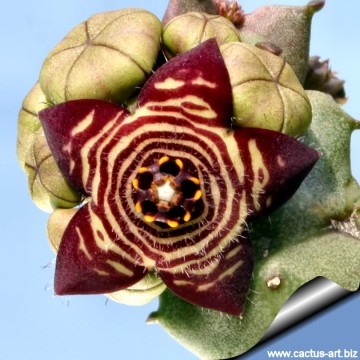 Caralluma europaea Photo by: Cactus Art
Caralluma europaea Photo by: Cactus Art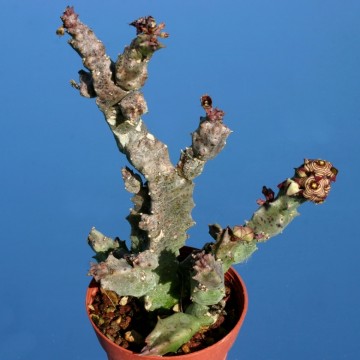 Caralluma europaea Photo by: Valentino Vallicelli
Caralluma europaea Photo by: Valentino Vallicelli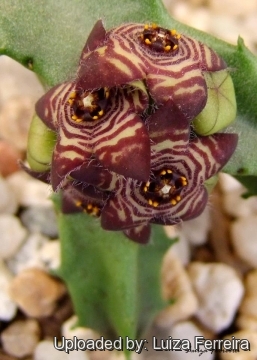 Caralluma europaea Photo by: Luiza Ferreira
Caralluma europaea Photo by: Luiza Ferreira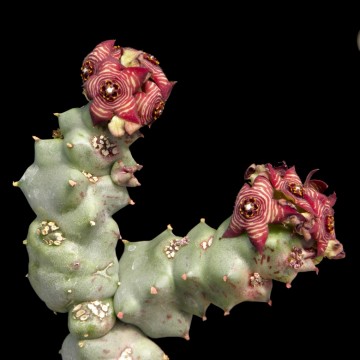 Caralluma europaea Photo by: Valentino Vallicelli
Caralluma europaea Photo by: Valentino Vallicelli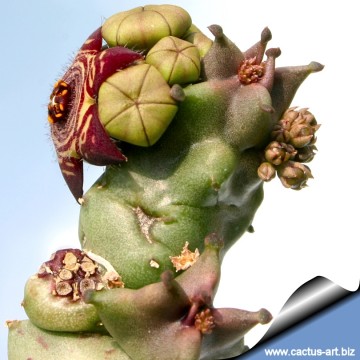 Caralluma europaea Photo by: Cactus Art
Caralluma europaea Photo by: Cactus Art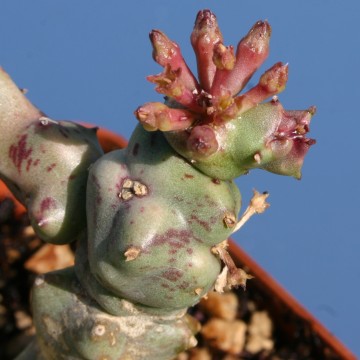 Caralluma europaea Photo by: Valentino Vallicelli
Caralluma europaea Photo by: Valentino Vallicelli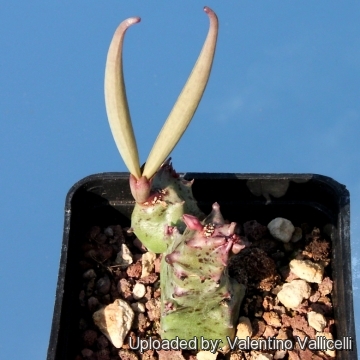 Caralluma europaea Photo by: Valentino Vallicelli
Caralluma europaea Photo by: Valentino Vallicelli Caralluma europaea Photo by: Valentino Vallicelli
Caralluma europaea Photo by: Valentino VallicelliCultivation and Propagation: Caralluma europaeaSN|1969]]SN|1969]] is extremely xerophytic and adapted to very dry soils. It grows quite easily and fast on its own roots. It is not difficult as commonly supposed.
Growth rate: It is a relatively rapidly growing and easily flowering species that will make large clumps given the best conditions. Most plants will offset readily, and clumps can be produced in a few years.
Soils: It likes very porous mineral cactus mix soil, pH 7,5 to 8,5 (mildly alkaline), but can become too elongated if compost is too rich.
Repotting: This plant needs plenty of space for its roots, repotting should be done every other year or when the it has outgrown its pot. Use pot with good drainage.
Watering: It needs regular watering, especially during the hottest summer days; provide also some light watering if the green house temperatures in winter are elevated. Either excessive or very scarce watering can induce rot.
Fertilization: Feed with a high potassium fertilizer in summer.
Frost Tolerance: Reputedly resistant to light frost if kept on the dry side prior to, and during, cold weather (hardy to -2 C ° C, or less for short periods), but for safe cultivation it is best to avoid freezing temperatures. In the rest period no high atmospheric humidity!!
Sun Exposure: Best for half-shade but grow well in full sun and full shade too. Tends to bronze in strong light, which encourages flowering, but is likely to suffer from sun scorch or stunted growth if over exposed to direct sunlight during the hottest part of the day in summer.
Diseases: This species is more resistant to cryptogamic diseases than others and is quite resistant to the “Balck spot” disease of Asclepiads. Rot it is only a minor problem with Caralluma europaeaSN|1969]]SN|1969]] if the plants are watered and “aired” correctly. If they are not, fungicides won't help all that much.
Uses: It is an excellent plant for container growing. It always looks good and stays small. It look fine in a cold greenhouse and frame or outdoor in a rockery.
Propagation: Seeds and cuttings. Cuttings will root only in hot weather. Cuttings must be kept very dry to root. Seeds germinate readily if they are sown when fresh.
Your Photos

by Valentino Vallicelli
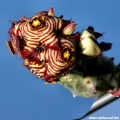
by Cactus Art
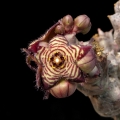
by Valentino Vallicelli






















